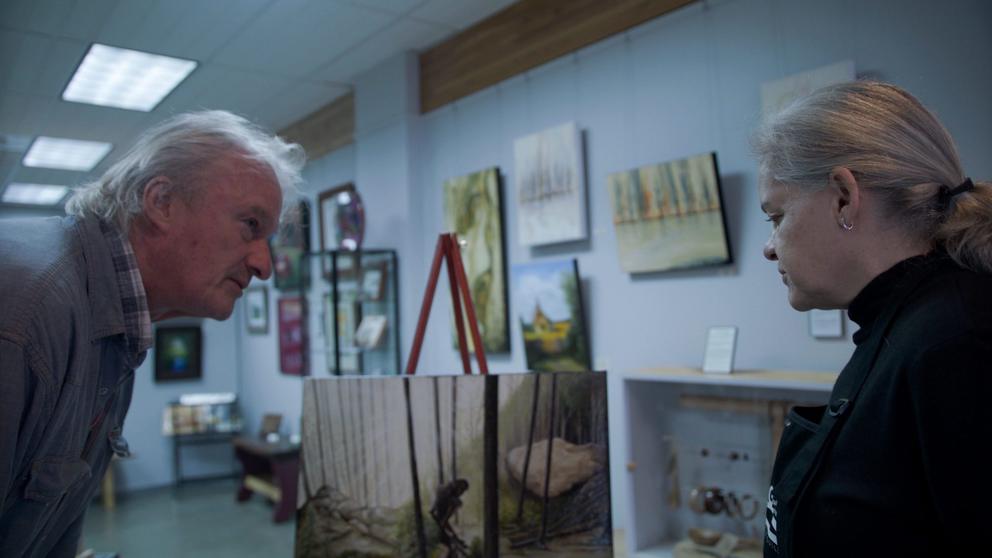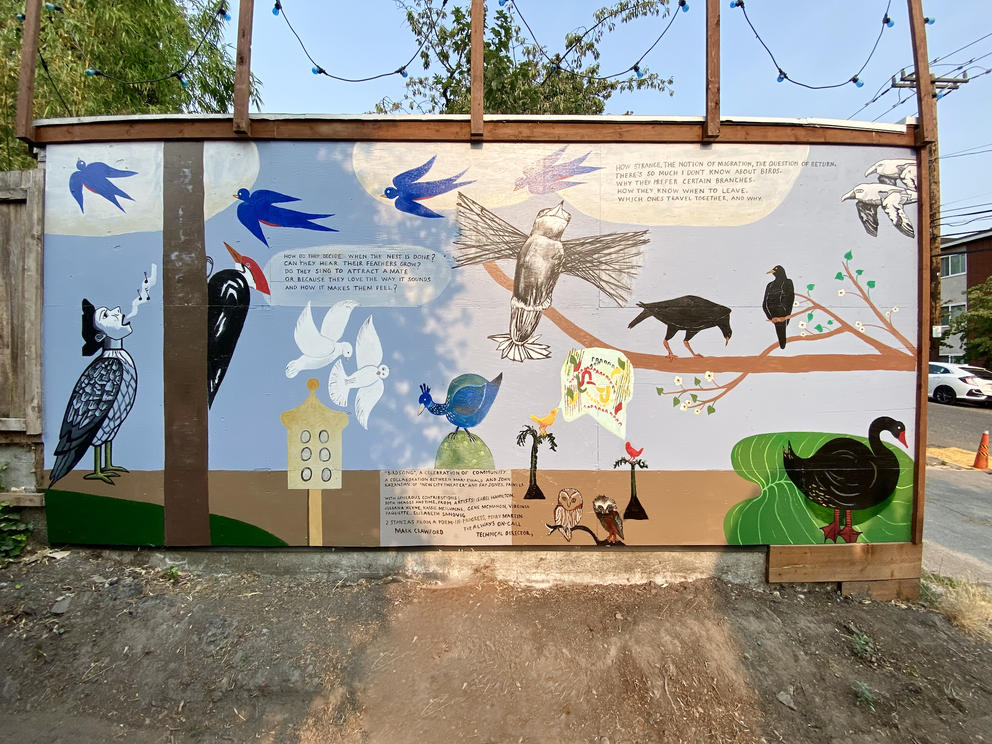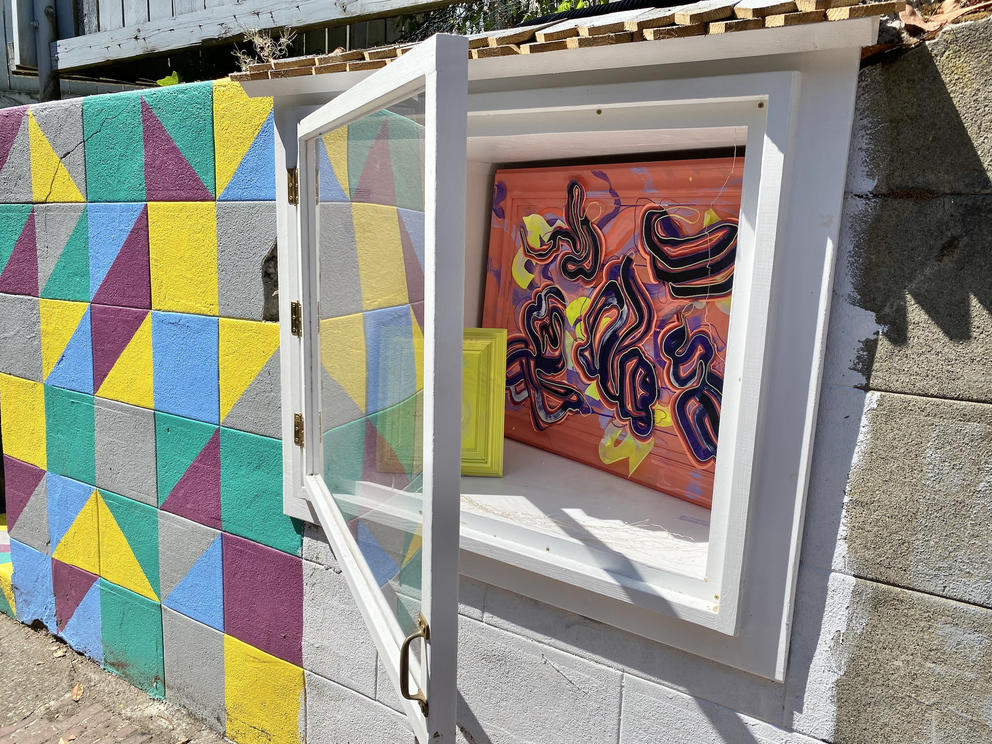I’ve written about a couple recent Sasquatch movies with Northwest connections, including the REI-made The Dark Divide: Sasquatch, which was based on local nature writer and lepidopterist Robert Michael Pyle’s book Where Bigfoot Walks: Crossing the Dark Divide.
ArtSEA: Notes on Northwest Culture is Crosscut’s weekly arts & culture newsletter.
The new movie was written and directed by Taylor Guterson (Old Goats), who grew up on Bainbridge Island (he’s the son of author David Guterson) and now lives in Snoqualmie. And while Hunting Bigfoot has all the trademarks of a Sasquatch quest — a slew of possible sightings, suspiciously broken branches and a camera that (dang it!) malfunctions — it’s an enjoyable watch for Guterson’s distinct approach.
Wanting the film to look and feel like a documentary, he hired local people who are not actors. The result is a remarkably natural cast, who improvised around a loose script and shared their own Bigfoot-sighting stories. Sometimes Guterson filmed them talking about real people in their lives (say, a troubled and absent father), and spliced the interview so it appears to be about John, the Bigfoot hunter and recovering alcoholic who lives in a sloppy tent by the river.
At one point in “Hunting Bigfoot,” John has a local artist (Gayll Morrison) paint his description of the sighting, and gets upset when she implies he imagined it. (Taylor Guterson)
“Some people have seen it and thought it was just a documentary,” Guterson told the Snoqualmie Valley Record. “And that’s really gratifying to me.” His gift was in selecting nonactors with intriguing personalities, such as lead John Green, who had a bit part in one of Guterson’s earlier films, and Ben Cockman, who runs Mt. Si Sports in real life (and the film), and who supports John in his search.
Beautifully filmed with an abundance of moss porn, the story also explores how one man’s search for meaning affects his family and friends. It’s poignant and relatable, with moments of humor, such as the squabbling among Sasquatch believers. And writer Robert Pyle appears as himself, weighing in on the signs of “Bigfoot gold fever.”
The film debuts this weekend at the North Bend Theatre, and is also playing selected dates in West Seattle, Monroe, Gig Harbor and Bainbridge Island. Guterson is deliberately screening Hunting Bigfoot first in small movie houses (rather than online), to support the arts venues hit hardest by COVID-19. It’s worth tracking down in the wild.
Here in the golden age of the amateur, it makes sense that a cast of unknowns could make a compelling Bigfoot movie. During the coronavirus lockdowns we saw Hollywood celebrities fade back a bit, as regular folks took the stage on TikTok and YouTube, while others excelled in art forms they had always wanted to try, from sourdough breadmaking to painting.
Art galleries are taking creative license as well. This weekend kicks off the second annual Seattle Deconstructed Art Fair, originally inspired by the COVID-19 closure of the big, fancy Seattle Art Fair (slated to return in July 2022). Nearly 50 local arts spaces have joined forces for this grassroots replacement, to encourage people to get out and explore art. Check out Crosscut reporter Margo Vansynghel’s preview of what’s in store.
The monthlong event (dates vary by gallery) starts this evening with the official return of Pioneer Square’s First Thursday Art Walk, a 40-year-old tradition that’s been dormant for the past 16 months. Bring your mask (many galleries will require it) and be prepared for an awkward return to mingling. When I ventured out to the recent Digable Planets show at Westlake Center, an old friend and I got stuck volleying the phrase “It’s so good to see you” back and forth like glitchy robots.
But that’s OK! We’re all getting used to talking IRL again. And if you need a break from conversation, you can go stare at the local bands playing live music — from retro pop to hardcore punk — in Nord Alley.
If you discover that alleys are your new thing, there are a couple of new art experiences to seek out in the streets of Capitol Hill. First is the new Aloha Community Art Museum, a small white box built into a colorfully painted concrete retaining wall in an alley near Vios Café (between 17th Avenue East and 18th Avenue East, just north of East Aloha Street).
Created by local artist Renee Nixon, Aloha features one artist at a time — currently that’s Friedel Fisher, whose swirling abstract paintings recall the marbled endpapers in vintage books. Part of the DIY microgallery trend, Aloha has a similar feeling to the Free Little Art Gallery on Queen Anne. But like Sun Spot in Des Moines, this one is curated (and please don’t take the art!).
Also worth an alley-hop: “Birdsong,” a new collaborative mural by Seattle visual art legends Fay Jones, Gene Gentry McMahon, Elizabeth Sandvig, Virginia Paquette, Juliana Heyne and Isabel Hamilton. Located on the side of a garage in a Capitol Hill alley near 12th Avenue and East Olive Street, the bright blue scene features birds of all feathers, flocked together.
The mural includes several lines of poetry, hand-painted in plain block letters atop a cloud:
There’s so much I don’t know about birds.
Why they prefer certain branches.
How they know when to leave.
Which ones travel together and why.
Written by Washington poet Terry Martin, the stanza pulses with the great mysteries of the outdoors — and our human desire to solve them.
Get the latest in local arts and culture
This weekly newsletter brings arts news and cultural events straight to your inbox.









